Tauranga Cultural Tour
The artworks you will tour are the works of award-winning local artists, weaving our cultural narrative from our cultural heritage, identity and relationships in the Bay and beyond.
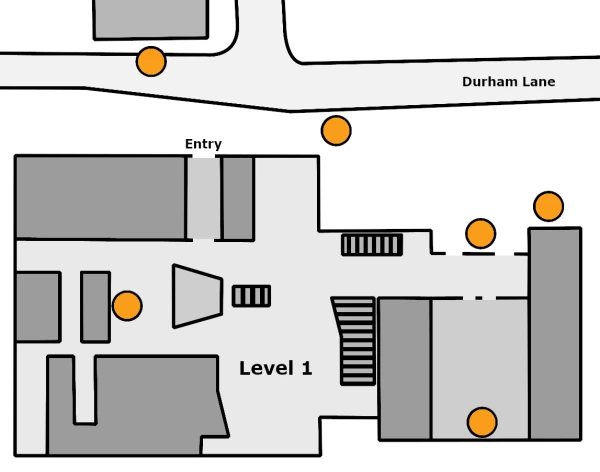
The University of Waikato, Tauranga Campus has a cultural narrative built into its frame and woven into its fabric. The narrative is designed to bring cultural identity and heritage to the building and to celebrate our relationships across the Bay of Plenty and beyond.
The artworks you are about to discover are the work of local, award winning artists who were inspired by the stories of Tauranga Moana and guided by kaumatua, along with university and architectural design advisers. It is an inclusive narrative that embraces the diversity of the cultural ethnicities that make up our campus community.
Te Poutokomanawa
Artist name: Whare Thompson
Year of creation: 2019
Material: Powder coated 5mm aluminium, external LED lighting
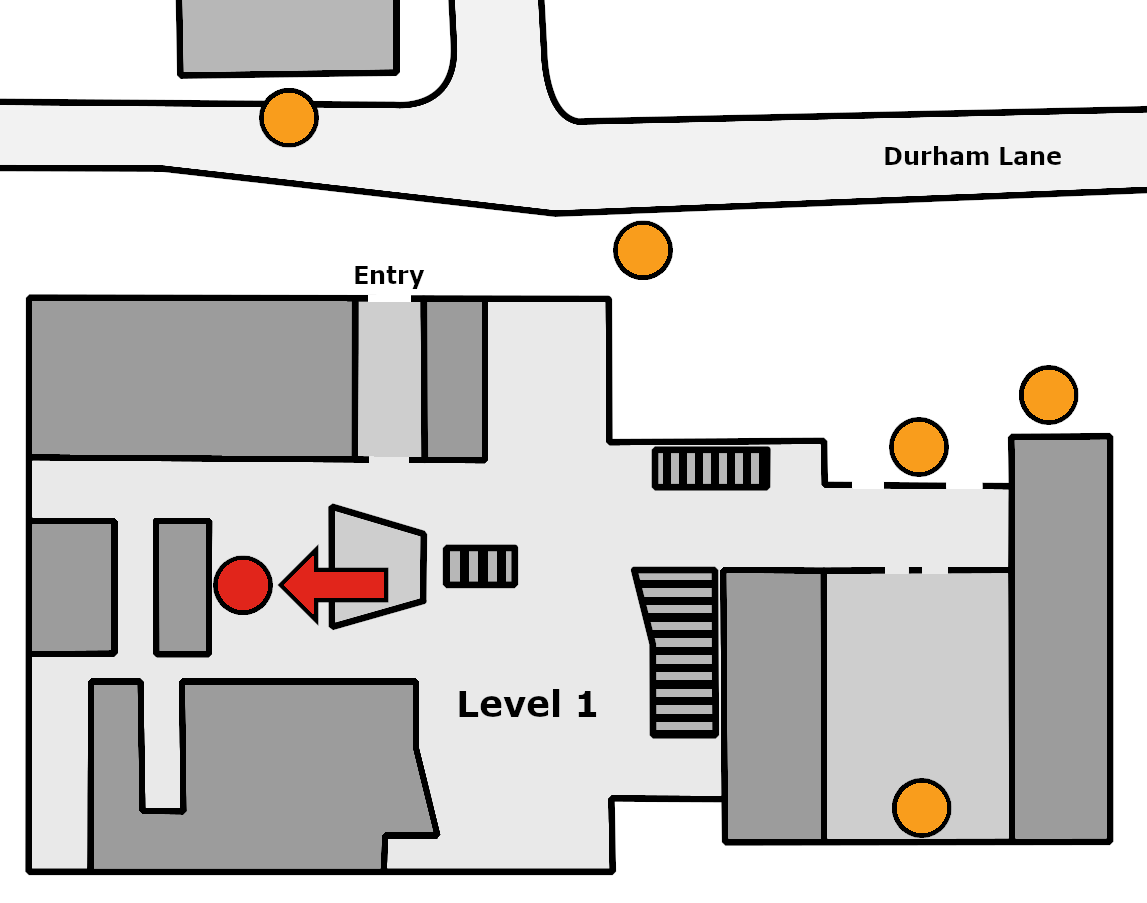
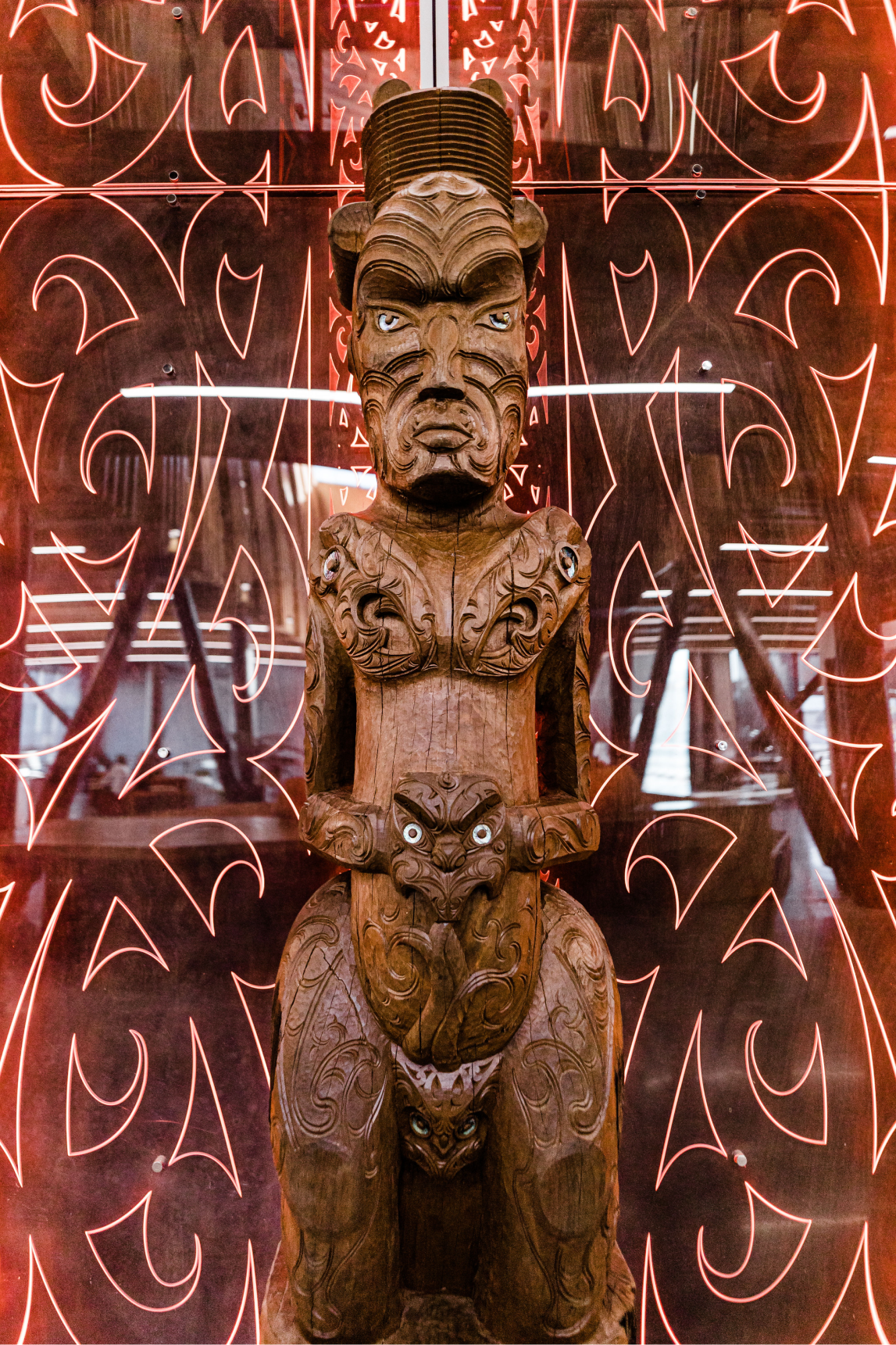
The Poutokomanawa is the centre post and the kaitiaki or guardian of the campus.
The carved figure represents Tānemahuta and Tawhaki, who both ascended into the heavens to obtain the baskets of knowledge, nga kete o te wananga.
The kōwhaiwhai, traditional patterns, that are encased in perspex, stretch 18 m through the full height of the atrium, and depict Tane’s and Tawhaki’s heavenward journeys.
The poutokomanawa also reflects the aspirations of students who undertake university study in pursuit of knowledge and understanding. Note the scars on the legs of the Poutokomanawa, which represent the resilience of Tāne and Tawhaki who both overcame trials and tribulations to achieve their purpose. This reminds us that any purposeful mission in life involves challenges that must be overcome, by digging deep on a personal level, but also by sharing problems and seeking help.
The Poutokomanawa was carved by Whare Thompson from ancient kauri pulled from the North Waikato swampland.
Te Toka a Tirikawa
Artist name: Whare Thompson
Year of creation: 2019
Material: Swamp kauri, oil stain, finished with linseed oil
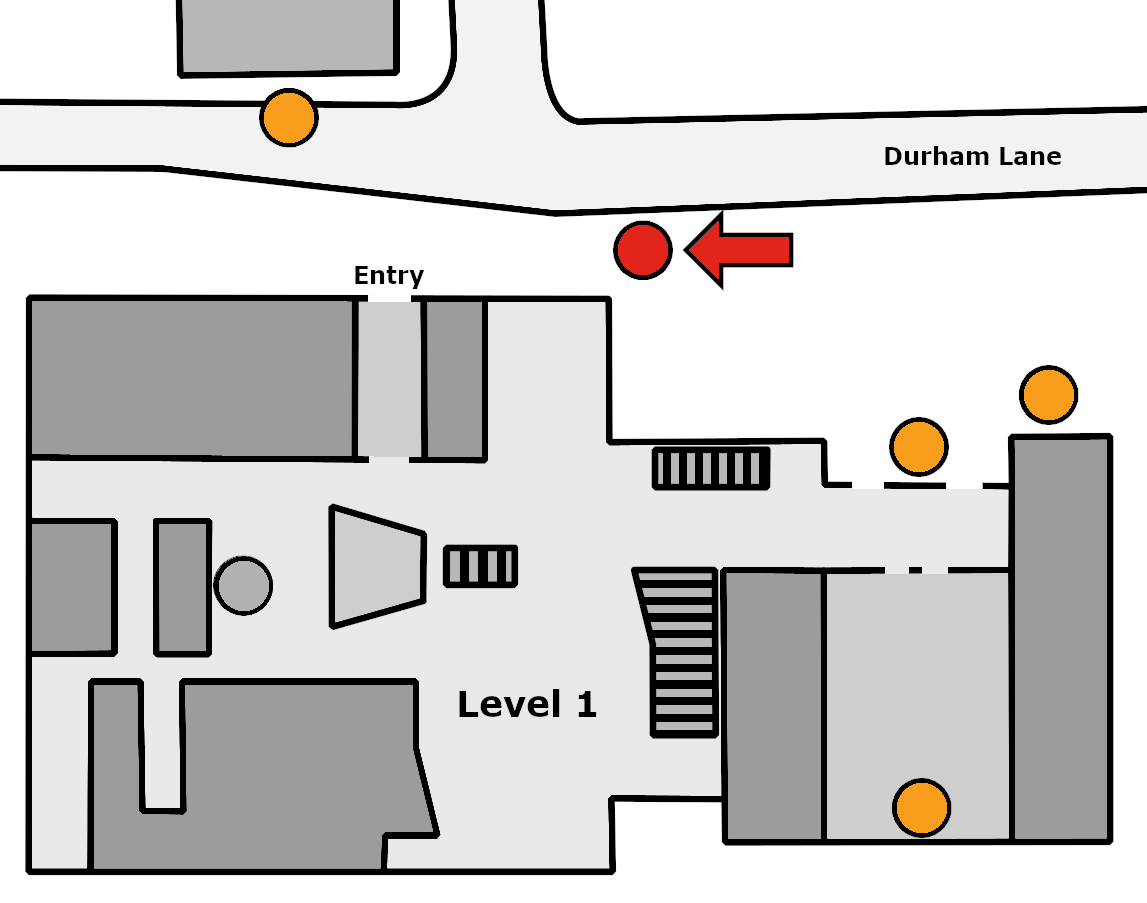
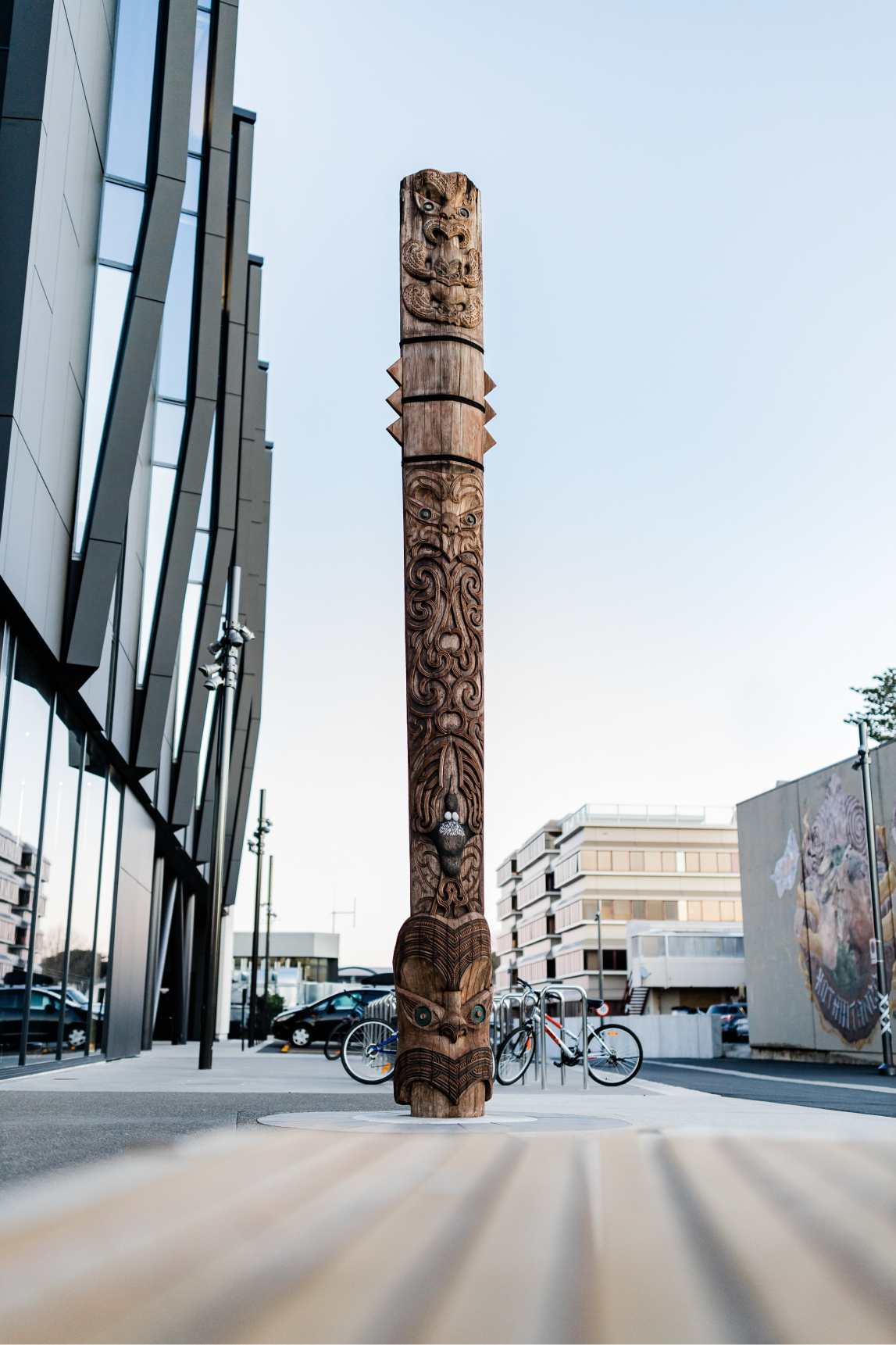
The Pouwhenua stands in the ātea courtyard as a beacon of welcome, and to honour the mana of the local hapū and iwi. Carved from a single piece of ancient kauri, it sits 3m deep in the ground and stands 6m high.
The Pouwhenua is Te Toka a Tirikawa – a reference to the rock formation of great cultural significance that guards the entrance to Tauranga harbour.
The figure at the top of the pou is Apanui, a chief from the Eastern Bay of Plenty who, in order to enhance his leadership ability, sought the wisdom of Kinomoerua, a tōhunga or priest in Tauranga Moana, depicted at the bottom of the pou.
Kinomoerua had a pet tui ‘Takahi’ who, seeing Apanui approach, warned Kinomoerua to prepare the marae for a visitor. After welcoming Apanui and hearing his plea for guidance and wisdom, Kinomoerua took Apanui out on the harbour in a waka.
Kinomoerua and Apanui observed the way Te Toka a Tirikawa stood firm as the waves crashed against it. Note in the centre of the pou, the representation of the crashing waves on the great rock, Tirikawa.
Kinomoerua advised Apanui to exemplify the resilience of the great rock Tirikawa in his leadership, and with a karakia or blessing, sent him on his way.
Apanui then returned to his people and became a great chief. This is a story of resilience, seeking advice and support, and celebrating connections across the Bay of Plenty.
Te Toka a Tirikawa – also the berthing place of the ancient Takitimu waka.
Te Pou Ruawhetū a Rēhua
Artists: Whare Thompson
Year of creation: 2019
Material: Powder coated 5mm aluminium, external LED lighting
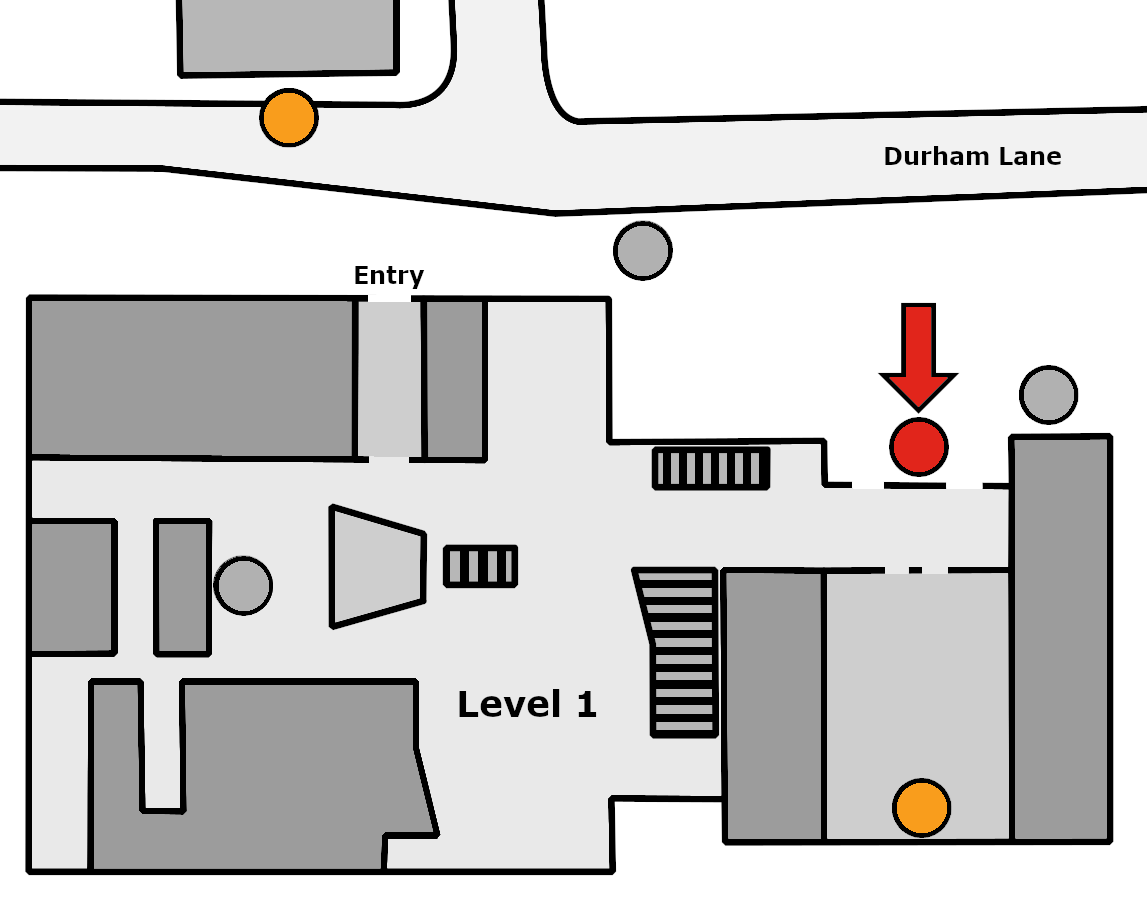
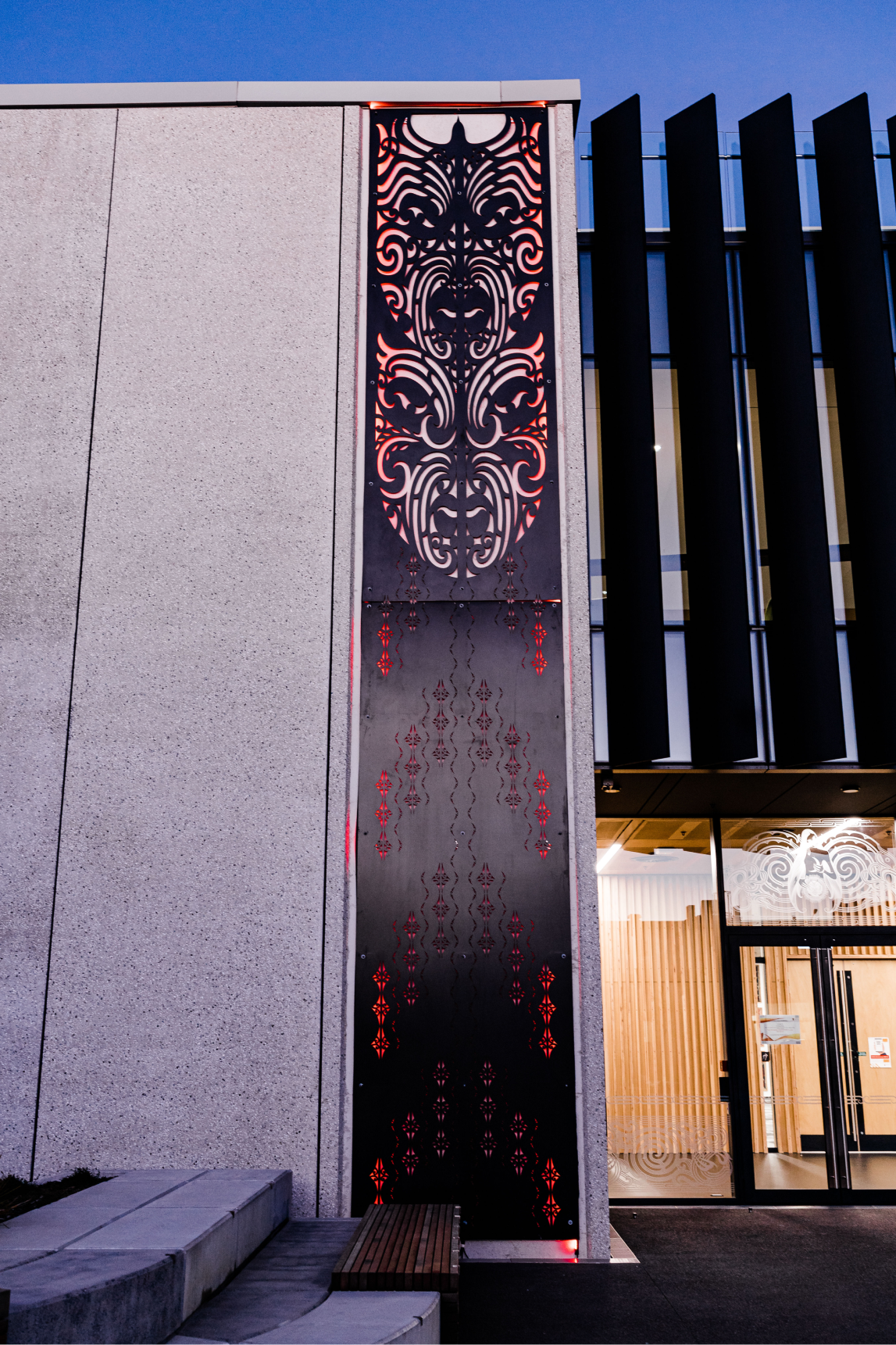
The celestial panel tells the story of Rēhua, Lord of the Stars, who gifted the baskets of knowledge to his brother Tānemahuta, and so it complements and completes the narrative of the Poutokomanawa in the atrium.
This pou represents not only the great exchange between Tane and Rēhua, but also the interactions between staff and students in the generation and transmission of knowledge.
With its celestial proportions, the panel reinforces the purpose of the building as a whare wānanga or house of higher learning.
The artwork is perhaps best observed at night time when the red light treatment behind the panel comes into effect.
With this panel and the Pouwhenua, Whare Thompson demonstrates his versatility as an artist by creating contemporary and traditional artworks that sit comfortably side by side in the campus ātea.
Hine Turama & Hine-te-āhuru
Artists: Jamie Boynton
Year of creation: 2019
Material: Glass frosted artworks

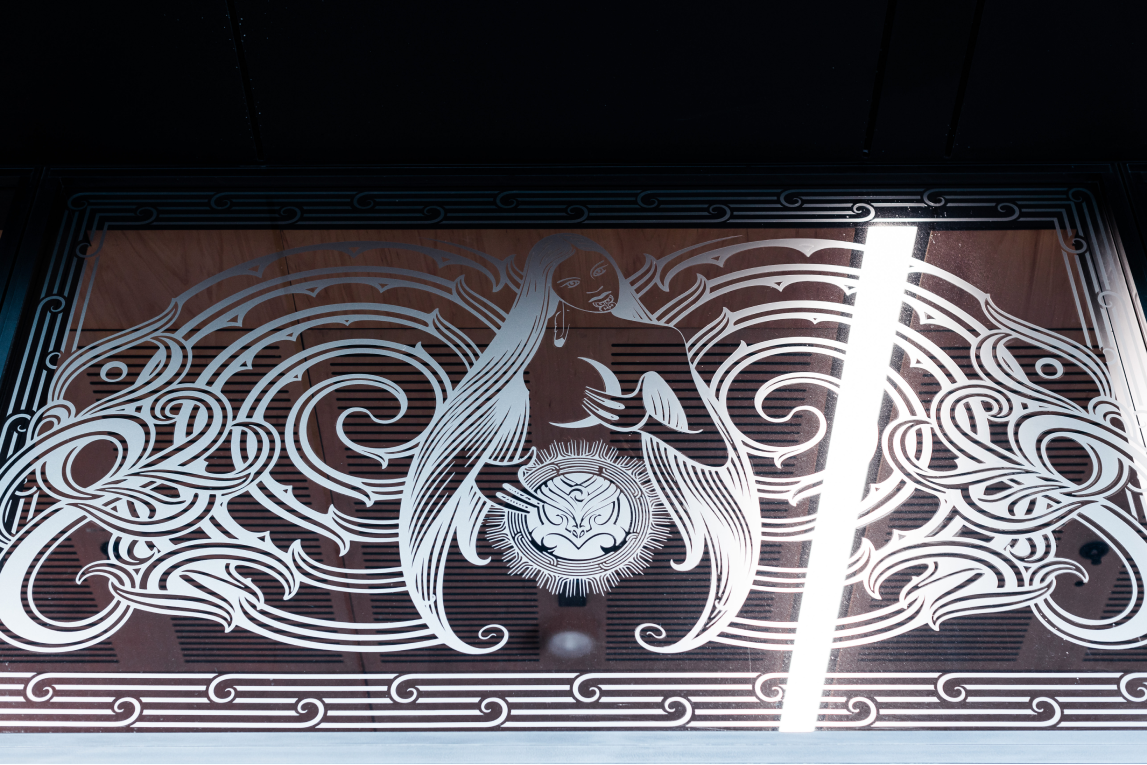
The celestial narratives of Hine Turama, mother of the stars, and Hine-te-āhuru, mother of the sun and moon are portrayed here.
Located above the entryway into the campus, these installations represent a modern expression of the traditional pare, being the carved mantel located above the doorway of a wharenui, where we celebrate mana wahine, the feminine dimension and influence, as the essential gateway into the whare.
We look to these figures for inspiration and to enhance our understanding of all the wonders of the heavens.
Te Manawaroa
Artists: Various
Year of creation: 2019
Material: Powder coated 5mm aluminium, external LED lighting
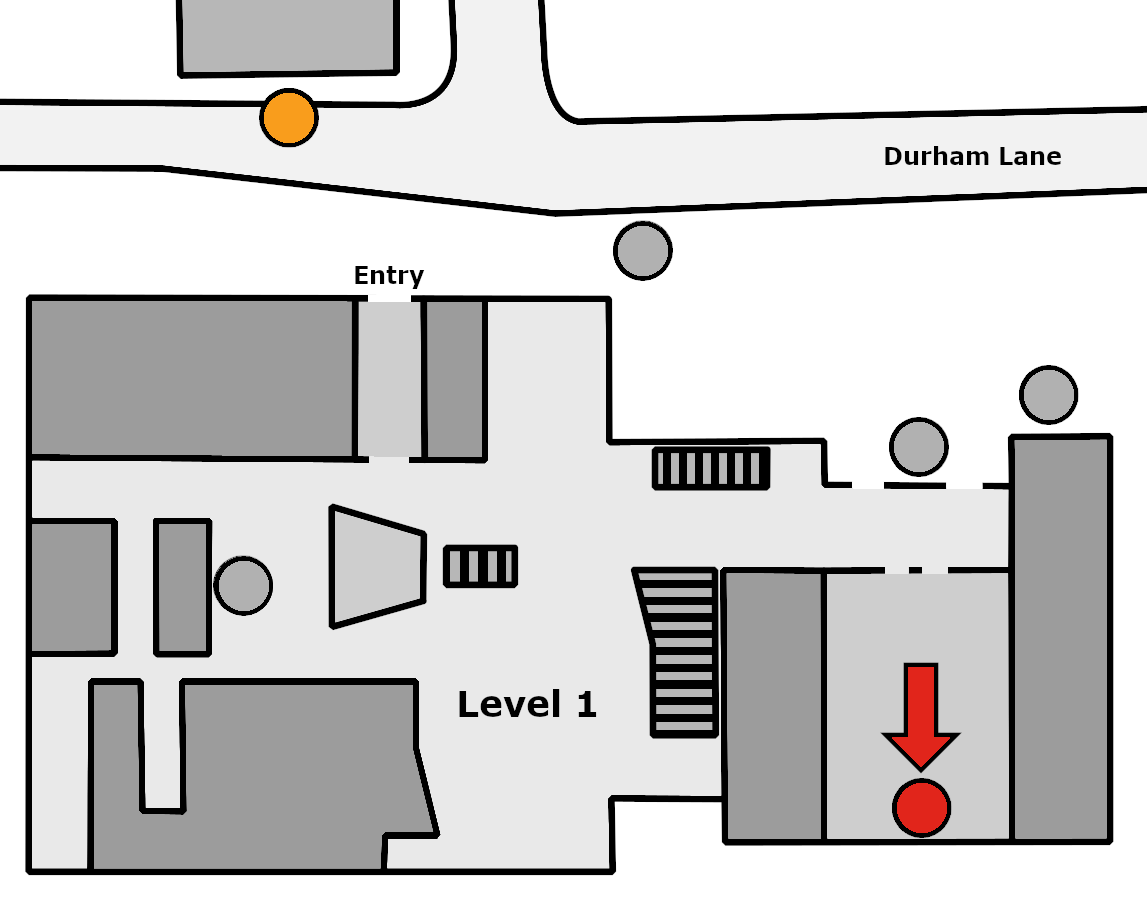
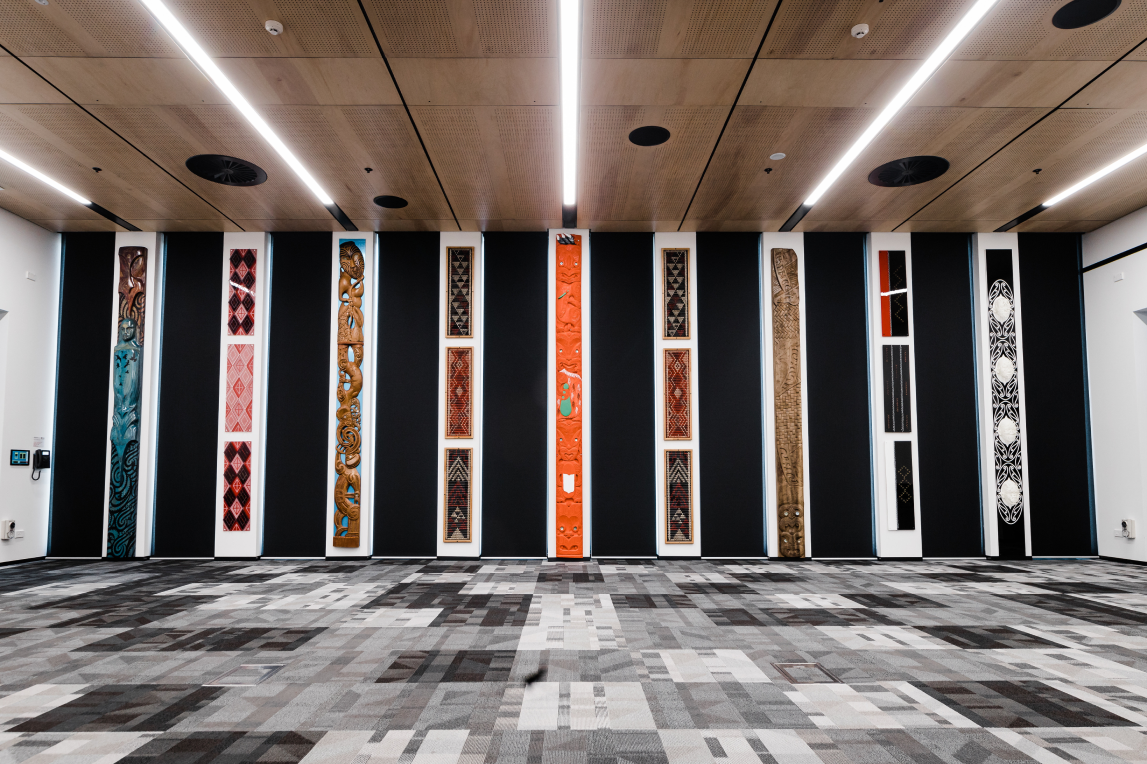
The name Te Manawaroa holds huge mana or significance.
First, it recognises the history and resilience of the local iwi and hapū communities of Tauranga Moana.
Secondly, it acknowledges the fortitude and perseverance that is required to complete a tertiary programme of study, and the aroha and support that sustains students and staff on the journey.
Thirdly, it references the longstanding and permanent commitment that the University has made to the Tauranga and Bay of Plenty communities.
And finally, it draws on themes of community, inclusiveness and diversity as reflected in the University motto ko te tangata.
Unlike traditional wharenui which have strict etiquette protocols, Te Manawaroa was confirmed in the opening ceremony of the dawn karakia, as a versatile space, where teaching, learning, meeting and socialising can all take place.
The artworks within Te Manawaroa have their own unique and independent narratives, but are also designed to be complementary and to work interactively. They follow a traditional formation common in wharenui, consisting of a central pou and extending outwards with alternating panels of tukutuku or woven panels and pou whakairo or carvings.
Te Manawaroa - a place of mana and manaakitanga.
Te Manawaroa - a premiere space for living and learning.
Te Kuraimonoa
Artists: Jamie Boynton
Year of creation: 2019
Material: Ply wood, oil based paint & epoxy resin

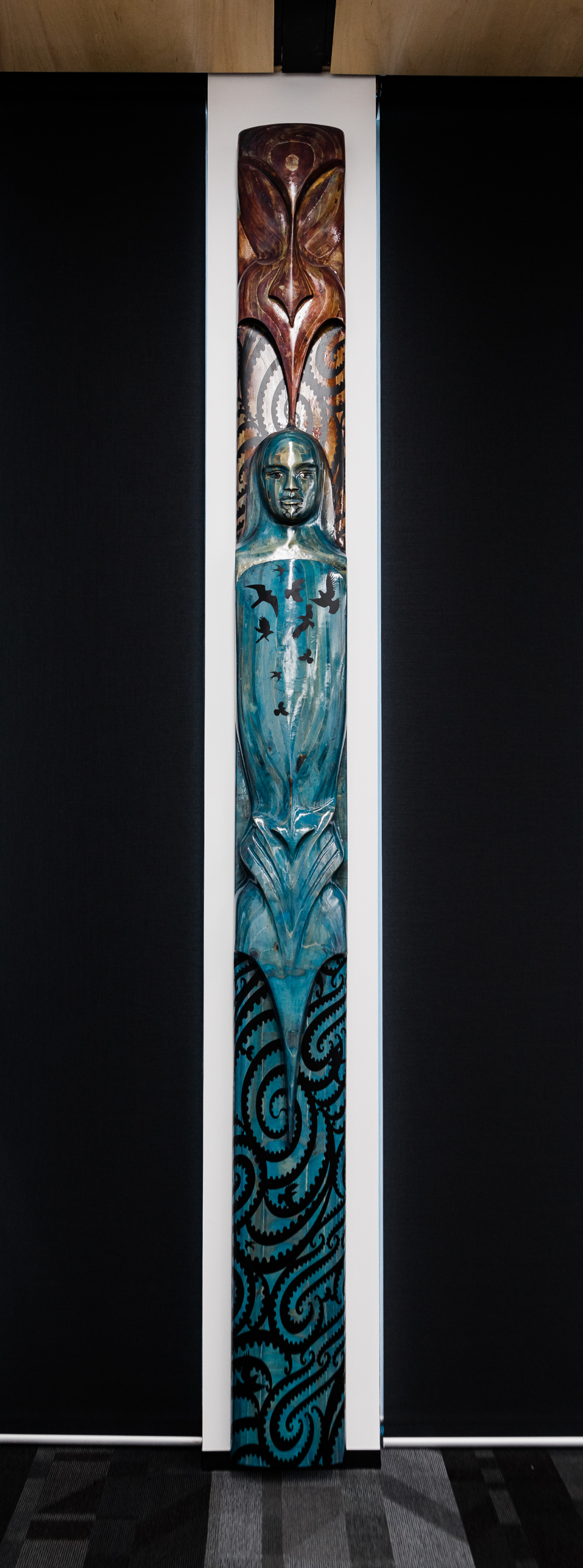
This is the ancestral maiden, Te Kuraimonoa, who through her illustrious whakapapa/ genealogy, represents the people and the communities from across the Bay of Plenty region.
From the Eastern Bay, to the central Bay, to the local surrounds of the Western Bay of Plenty, Te Kuraimonoa celebrates our connections across these diverse communities.
According to the Te Arawa people of the central Bay of Plenty, such was the beauty of Te Kuraimonoa, that she caught the attention of the celestial being, Pūhaorangi, and together they begat Ohomairangi, providing for the origins of the people who travelled from the Polynesian homeland of Hawaiki to the Bay of Plenty aboard the Te Arawa canoe.
Te Kuraimonoa, with her gentle, welcoming expression, connects the communities across the Bay of Plenty, while her blue and yellow colouring and the manu or birds on her cloak, represents our campus funders, the TCC, the BOPRC and the TECT, along with schools and community groups across the Bay of Plenty region.
Pātiki
Artists: Maraea Timutimu
Year of creation: 2019
Material: Sand blasted acrylic, wire, acrylic dowel

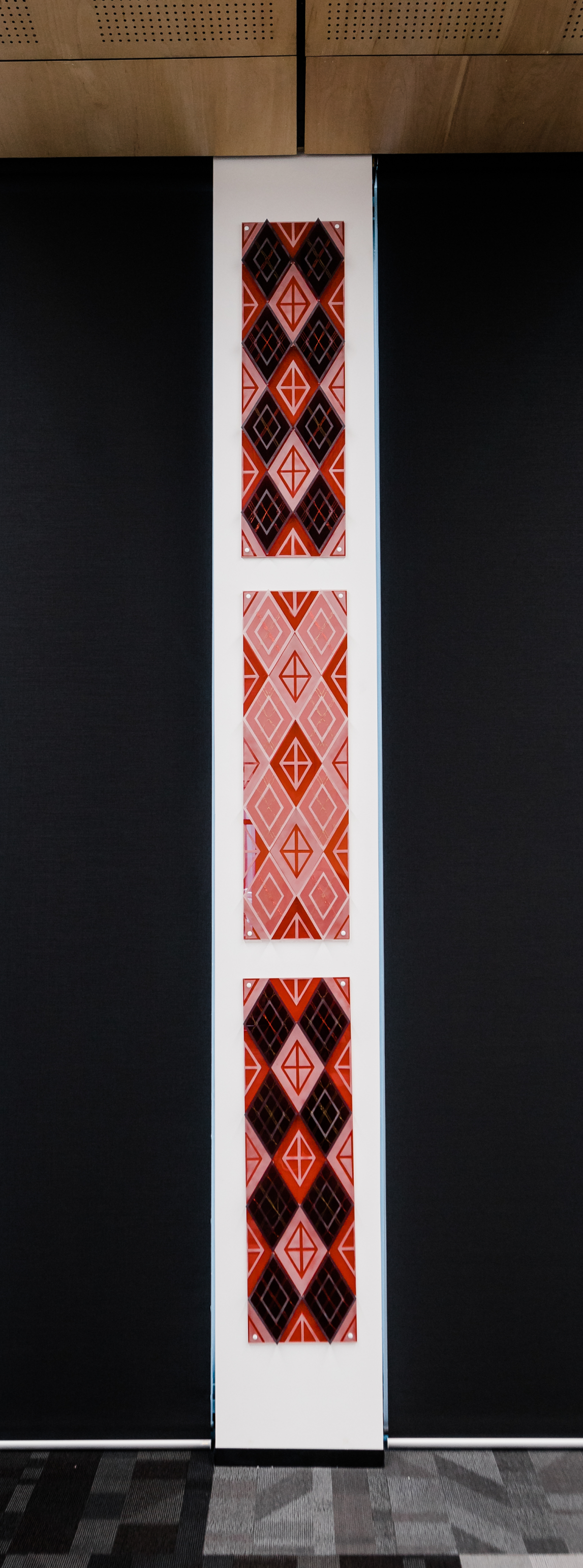
This artwork is an example of contemporary tukutuku paneling. Tukutuku often represent connections to the natural world, and this tukutuku depicts the pātiki or flounder, a prized food source of the iwi of Tauranga Moana. Indeed, the artist, Maraea Timutimu, recalls fond childhood memories of being taught by her koro how to collect pātiki.
In this representation, the pātiki represents the mana of the local iwi and the willingness and ability to provide for visitors. It is therefore an expression of manaakitanga or hospitality, which is a key pillar of the campus.
The pātiki panel is also a reminder of our obligation to act responsibly and sustainably toward the environment and, in particular, our waterways and the marine life within. By using University of Waikato colours, the tukutuku also reflects our motto ko te tangata, for the people.
Ngā Maunga
Artist: James Tapiata
Year of creation: 2019
Material: Swamp kauri backed with 3mm aluminium with vinyl film possibly

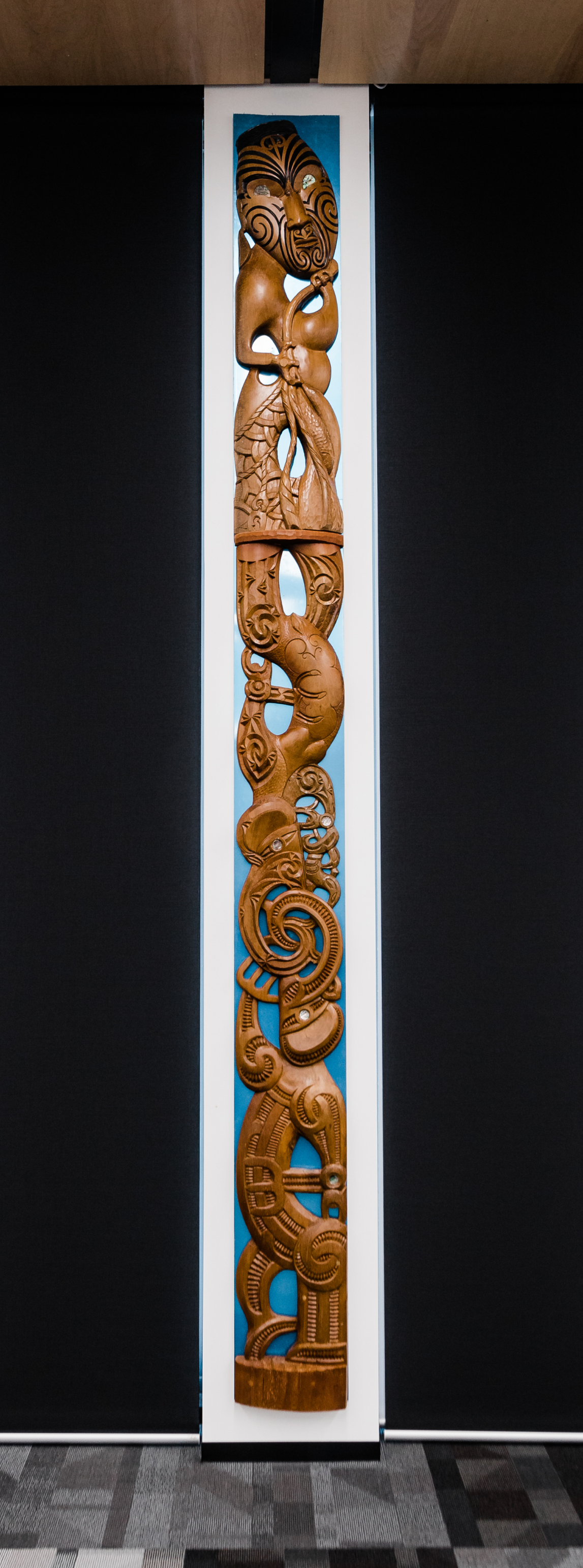
Master carver, James Tapiata’s panel tells the love story of the three local mountains, Mauao, Pūwhenua and Otanewainhuku.
Mauao, once a nameless, inland mountain, fell in love with Pūwhenua, but it was an unrequited love, as Pūwhenua was enamoured with Ōtanewainuku.
In despair, the nameless mountain begged the patupaiarehe forest fairies to drag him out to sea so that he might disappear into the ocean – but as the patupaiarehe hauled him towards the ocean, the sun broke the dawn sky, causing the patupaiarehe to flee, and the mountain was left where he now stands, guarding the entrance of Tauranga Moana.
The patupaiarehe gave him the name Mauao, meaning ‘caught by the morning sun’, and over time, he came to represent the mana of the local iwi, and now stands proud as an iconic landmark of Tauranga Moana.
Mauao’s story is a hopeful one – that we can emerge stronger from depression and trials of the heart. It also reminds us to look out for each other, so that we might all get through to see another day.
He niho taniwha, he, kete kai, he maunga (left)
Artists: Melissa Willison & Teresa Nepe
Year of creation: 2019
Material: Kiekie fibre, dowling, wooden slats, paint

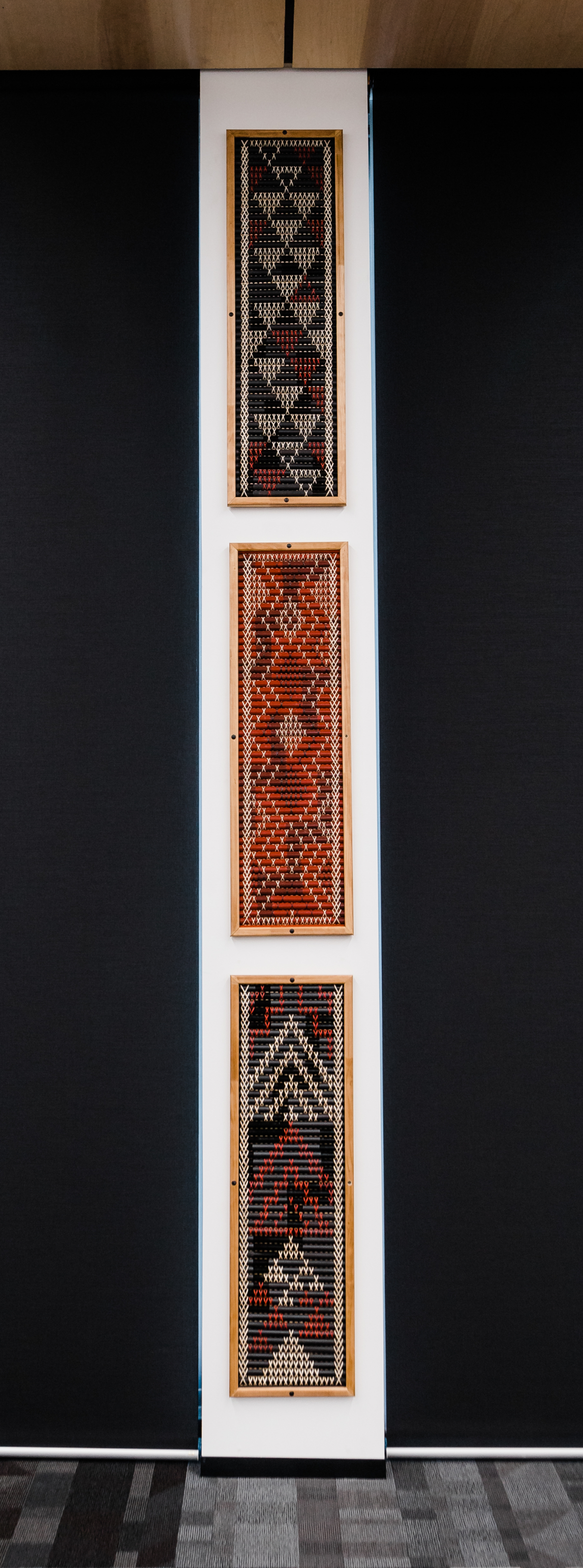
He niho taniwha, he, kete kai, he maunga
These traditional tukutuku panels pay tribute to the mana of the local iwi and hapū and the connections with Waikato Tainui and the Kīngitanga.
The top panel is the niho taniwha, a Tainui pattern that represents the great chiefs of the Waikato river, extending to the Kīngitanga Movement, and the Māori King, Tuheitia, Pōtatau te tuawhitu.
The middle tukutuku repeats the pātiki or flounder motif, symbolising again the mana of Tauranga moana and the importance of manaakitanga – being a generous and responsible host.
The bottom panel reflects the love story of the three mountains, and reminds us again to watch over our rangatahi and our most vulnerable with care and aroha.
By being replicated on both sides of the central pou, these tukutuku panels give prominence and mana to the central carved panel – the pou tūārongo.
Pou tūārongo
Artists: Michael Mason
Year of creation: 2019
Material: Painted swamp kauri


The central pou tūārongo captures our attention with its vibrant colour that reflects the University of Waikato crest.
Represented in the top figure is the trailblazing leader, Tamatea Arikinui, who built and sailed the great waka, Takitimu across the Pacific and landed at Te Awanui harbour. His hair is adorned with the feathers of the much-prized huia bird, and he holds the sacred adze, Te Awhiorangi, which was used to help guide the way to Aotearoa.
The second chiefly figure stands on the summit of Mauao. He holds a mere pounamu, a greenstone weapon, which he points downward in a gesture of peace. He reminds us of the painful history of the colonial wars that impacted the communities of Tauranga and the wider Bay of Plenty through the 1860s and beyond, whilst encouraging us all in these contemporary times to express love, respect and tolerance for all in the spirit of partnership.
The third figure holds a book, representing the rich heritage of local scholars and academics who have paved the way for the establishment of the University here in Tauranga moana .
The bottom koruru represents the university motto ko te tangata and acknowledges the university’s commitment to the iwi and hapū of Tauranga Moana.
He niho taniwha, he, kete kai, he maunga (right)
Artists: Melissa Willison & Teresa Nepe
Year of creation: 2019
Material: Kiekie fibre, dowling, wooden slats, paint

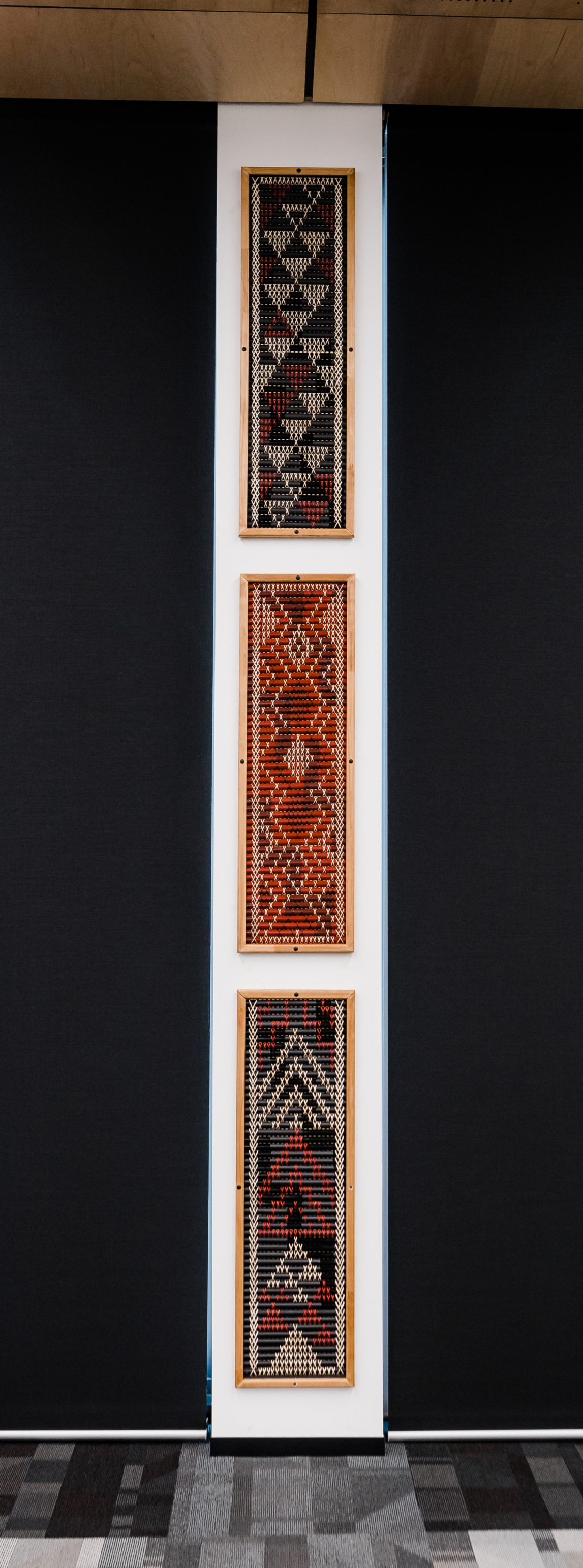
He niho taniwha, he, kete kai, he maunga
These traditional tukutuku panels pay tribute to the mana of the local iwi and hapū and the connections with Waikato Tainui and the Kīngitanga.
The top panel is the niho taniwha, a Tainui pattern that represents the great chiefs of the Waikato river, extending to the Kīngitanga Movement, and the Māori King, Tuheitia, Pōtatau te tuawhitu.
The middle tukutuku repeats the pātiki or flounder motif, symbolising again the mana of Tauranga moana and the importance of manaakitanga – being a generous and responsible host.
The bottom panel reflects the love story of the three mountains, and reminds us again to watch over our rangatahi and our most vulnerable with care and aroha.
By being replicated on both sides of the central pou, these tukutuku panels give prominence and mana to the central carved panel – the pou tūārongo.
Ngā Waka
Artists: Robert Turner
Year of creation: 2019
Material: Swamp kauri

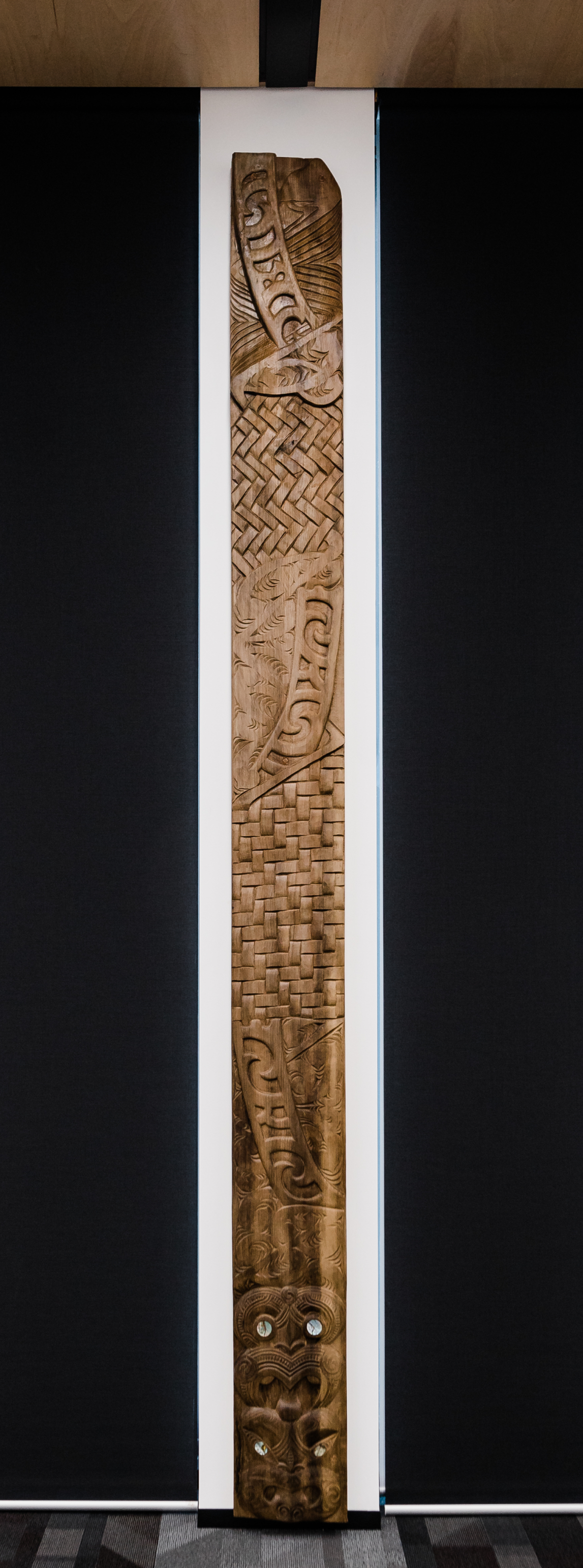
Keeping the natural hue of the ancient kauri from which it was carved, this pou represents the many ancestral canoes that made the intrepid journey across the Pacific from the homeland of Hawaiki to Aotearoa.
The taurapa, or sternposts, of the waka are prominently depicted, with their unique and intricate carvings imbued with sacred meaning.
The woven tapestry featured throughout, symbolises the connectedness of the tribes and the University’s role as a tertiary partner with and for these communities.
The symbolism of the waka also extends to the diverse communities from across Aotearoa, New Zealand and the students and staff who have come from across the country to study here at the Tauranga campus.
The two koruru at the base acknowledge the university’s tertiary partnership with Toi Ohomai and Āwanuiārangi.
The overarching theme is very much one of collaboration and connection across Aotearoa, and beyond.
Te Moana
Artists: Shona Tawhiao
Year of creation: 2019
Material: Acrylic, copper wire

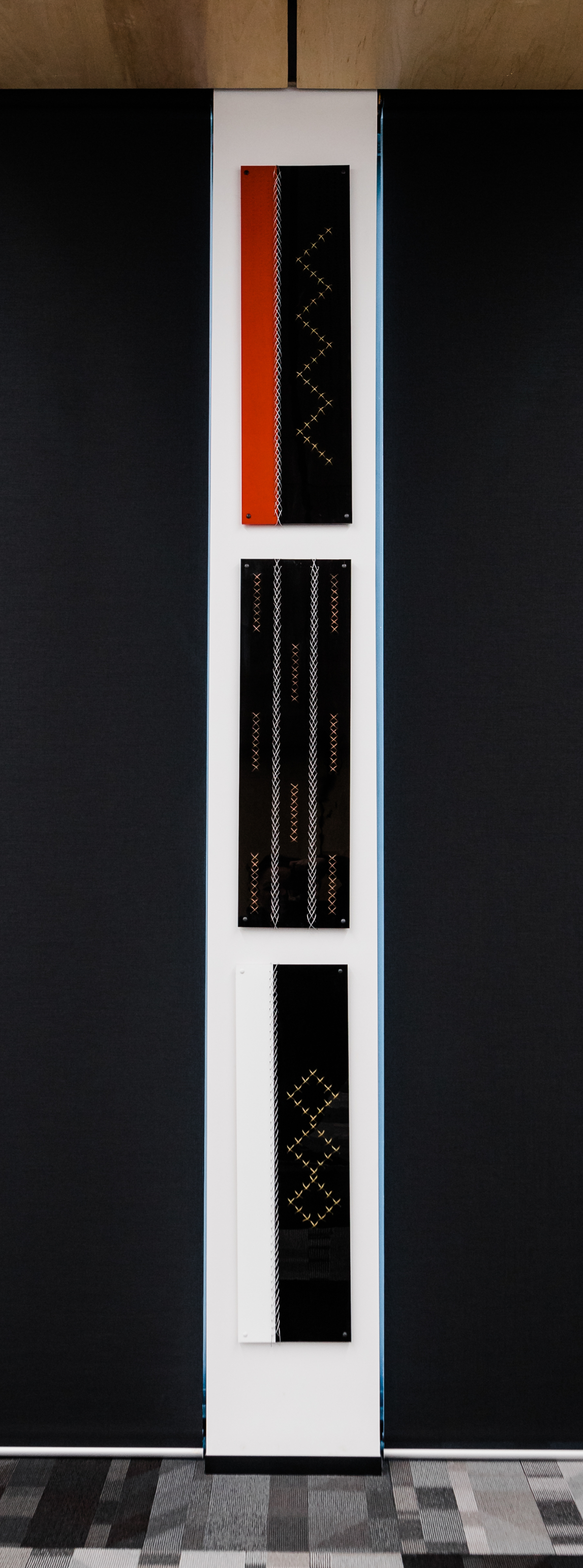
The ocean is the overarching theme of these contemporary tukutuku panels.
The top panel represents Aramoana, the ocean pathways that connect all cultures.
The middle panel portrays the salty tears of the toroa or albatross. In the Māori world, the tears of the albatross represent its longing for its oceanic home. Hence, this reference encompasses a lament for the ancestors, and a longing to one day reconnect with them in the spiritual homeland.
The bottom panel echoes the themes of the pātiki, and also the story of the three mountains with its lessons in life and love.
Ngā Hau e Whā o te Ao
Artists: Kereama Taepa
Year of creation: 2019
Material: 3D printed

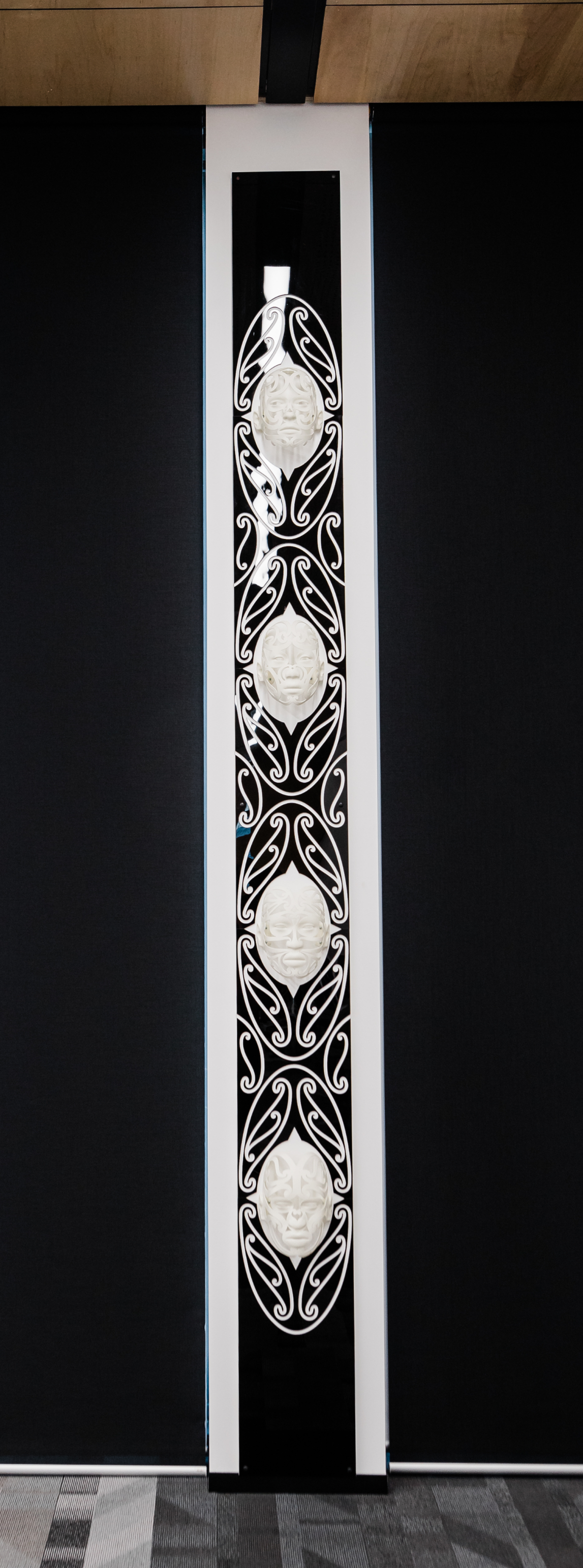
This 3D printed panel represents Ngā Hau e Whā o te Ao, the four winds of the world – in recognition of the diverse cultures that have come to the campus from across the globe.
Look closely and you will see that the facial features are each unique and representative of all the different ethnic groups.
The pou’s message is clear – that no matter where you come from in the world and what language you speak, you are welcome in this place. That the university is an inclusive environment that celebrates and embraces the cultural and ethnic diversity of our campus community.
Kotahitanga
Artist: Graham Hoete (Mr G)
Year of creation: 2020
Material: Mural
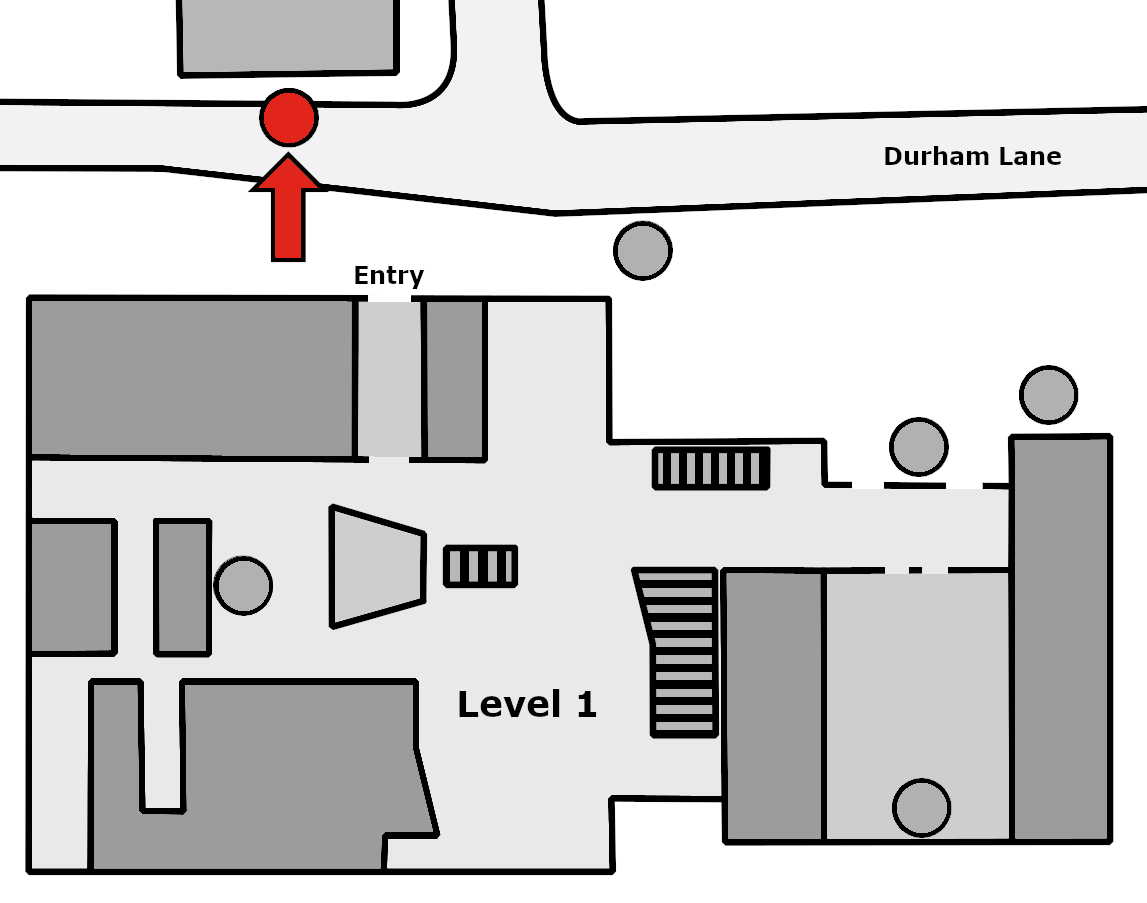
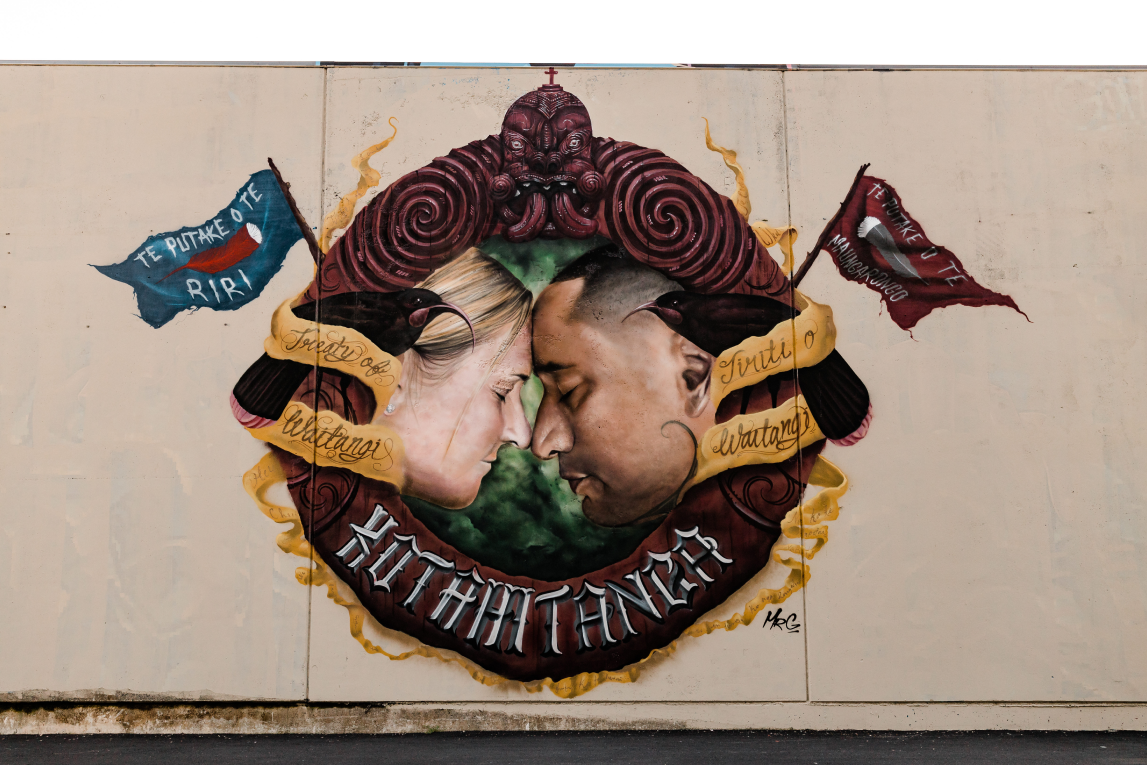
This portrait comes to the University campus courtesy of local artist, Mr Graham Hoete, better known locally and internationally as ‘Mr G’.
In this mural, Mr G emphasises the themes of kotahitanga and aroha, unity and love, as the key ingredients for meaningful partnerships under Te Tiriti o Waitangi, The Treaty of Waitangi.
While Te Pūtake o Riri signals that we will always remember the pain, conflict and loss that was endured through the colonial wars of the 1860s, Te Pūtake o te Maungarongo encourages us to find pathways for peace, reconciliation, and partnership, now and into the future.
The beautiful huia bird, native to Aotearoa and sadly now extinct, represents the theme of cooperation in life. In their complementary and very practical partnership, the male and female huia would work together to provide for their young.
And as the main subject of the mural... is Mr G himself, who with his wife Melissa, provides a very personal and poignant exemplar of love between Māori and Pākeha.
Kotahitanga – bringing the message of love, unity and acceptance to the Tauranga Campus of the University of Waikato.